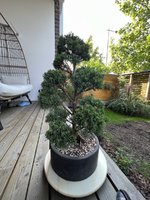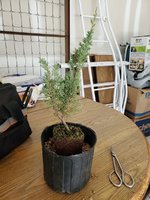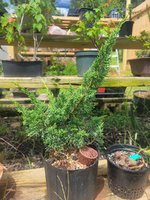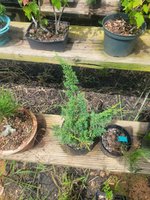Hi everyone, my name is Peter, I'm 55 and live in Helsinki. I have dabbled with the world of bonsai for the past five years, mainly indoor suitable plants, and recently moved house and now have a garden. The garden has opened up possibilities to outdoor plants and I'm excited to start but my age has been a concern when pondering possible projects. Anyway I decided I wanted to start with a plant with some age and reasonable development. At my local garden center there is a Japanese garden and a particular juniper had been sitting there since 2014 in the same pot and in the same spot, overlooked and unloved for so long. So I decided to take it home and paid €183 for it. It's exactly 60cm tall and the seller told me it is at least 20 years old.





What I need from those off you with practical experience is guidance on styling and care. I have attached photographs and in unsure how to link videos here. As you can see the tree is as straight as an arrow and the nebari is nothing to write home about but I love the tree and I'm sure it will make a fantastic formal upright. Let me know your thoughts.
Thanks, Peter





What I need from those off you with practical experience is guidance on styling and care. I have attached photographs and in unsure how to link videos here. As you can see the tree is as straight as an arrow and the nebari is nothing to write home about but I love the tree and I'm sure it will make a fantastic formal upright. Let me know your thoughts.
Thanks, Peter










